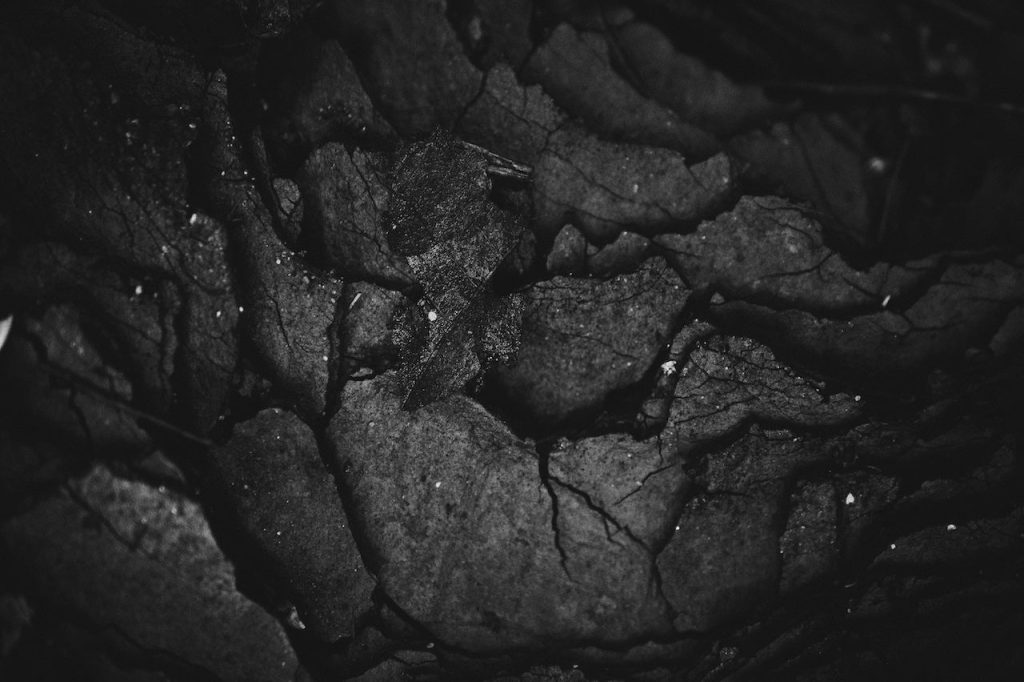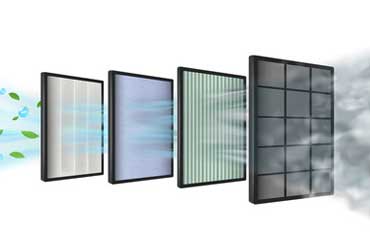Carbon filters – What are the benefits?
The air we breathe is essential to our health, but unfortunately, it’s not always as clean as we would like. Thankfully, carbon filters can help clean the air and improve indoor air quality. In this guide, we will explore the history of carbon filters, how they work, and how they are used today. We will also take a look at some of the benefits of using carbon filters at home and at work.

The history of activated carbon
In the late 1700s, German-Russian chemist and pharmacist Johann Tobias Lowitz was among the first to explore the effects of charcoal and the way it absorbed pollutants. As part of his experiments, Lowitz researched how charcoal could decolour, purify water, absorb gas, and remove odours.
Then in 1854, Scottish chemist John Stenhouse discovered that activated carbon was an excellent adsorbent and disinfectant for gases and vapours. This discovery kickstarted the use of activated carbon in air filtration as Stenhouse developed a charcoal respirator or “gas mask”.
During World War I, the U.S. army used activated carbon in gas masks to filter out poisonous gases from chemical warfare attacks.
Today, activated carbon is used in many settings and products, from pharmaceuticals and food and beverage manufacturing processes to water purification and disinfection purposes in hospitals, work environments and private homes.
How do carbon filters clean the air?
Activated carbon works by adsorbing (not absorbing) pollutants, bacteria and other harmful particles. Adsorption is the process of binding molecules and particles to the surface of a solid, like activated carbon.
When air passes through a carbon filter, pollutants are attracted and stuck. As air passes through the filter, contaminants are trapped on the carbon’s surface, leaving clean air behind.
The ability of activated carbon to adsorb different impurities is due to its large surface area of pores or tiny holes. Carbon filters come in various shapes and sizes, so the surface area of each filter depends on its size.
Activated carbon vs activated charcoal – is there a difference?
Activated carbon is the same thing as activated charcoal, although the terms are often used interchangeably. Activated carbon is made from organic materials like wood, coal, coconut shells and peat moss. The organic material is then heated in an oxygen-free environment to produce activated carbon or charcoal.
Carbon bags – a cheaper alternative to carbon filters to get clean air?
Carbon bags are often marketed as a cheaper alternative to carbon filters using activated bamboo charcoal. They generally require recharging in sunlight and do not use any electricity.
The ability of activated carbon to adsorb pollutants, bacteria and other harmful particles are well known. However, it has been suggested that carbon bags are only efficient in filtering out smells, not actual pollutants like smoke or harmful gases like formaldehyde.
It is yet to be seen if carbon bags are a viable and cost-effective alternative to, for instance, electric air purifiers containing carbon, HEPA and other filters.
What pollutants can carbon filters clear?
Carbon filters can clear a wide range of airborne pollutants and toxic chemicals, including:
- mould spores
- smoke
- dust mites
- pet hair
- formaldehyde
- benzene
- and ammonia.
Where can formaldehyde, benzene and ammonia be found?
Formaldehyde, benzene and ammonia are typically found in many everyday products, such as;
- disinfectants
- glues
- resins
- building materials
- beauty products
- and even furniture.
Formaldehyde is also released while burning fuels, while benzene is released in exhaust and tobacco smoke. Ammonia is found both indoors and outdoors in animal waste, fertilisers and cleaning products.
Do carbon filters work on their own?
For maximum efficiency, activated carbon filters are typically used with other filtration components like pre-filters, HEPA filters and ionisers.
The air purification effect of a carbon filter increases when combined with other air filters, as it helps trap and eliminate any remaining particles and capture vapours, odours and other gaseous pollutants before releasing clean, sanitised air back into the room.
How are carbon filters used in air purifiers?
Most air purifiers have a carbon filter as part of a multi-filtration system. However, the number of filters used in an air purifier and their placement depends on the model and manufacturer.
Generally, air purifiers with carbon filters have a pre-filter that traps larger particles such as pet hair, dust mites and pollen spores. Carbon filters are part of the second stage of the air filtration process using electric air purifiers.
The surface area of the carbon filter then helps adsorb, disinfect and eliminates any unpleasant odours and harmful substances like formaldehyde from the air, which then enters the anti-allergy filter. During this part of the filtration process, microparticles, including bacteria, are collected and hindered from populating the air further.
Lastly, any remaining microscopic particles of 0.1 microns or larger are captured by the HEPA H13 filter. To help disinfect and sterilise viruses or bacteria, UVC light is used to help kill their cellular DNA followed by ionisation, where negative ions get released and attach to micropollutants. The air purifier then releases the clean air back out into the room.

Best carbon filter air purifiers
Over 5,000 customers have chosen RUHENS air purifiers to improve indoor air quality. All of our units use carbon filters and are medically graded.
- The RUHENS WHA-500 and RUHENS WHA 200 are both excellent at cleansing smaller environments due to their 4-part filtration system with carbon air filters. Each unit has multiple smart features, such as sleep mode, automatic air volume control, and timer settings. You’ll also be alerted when it’s time to replace the filter.
- The RUHENS WHA 400 UVC can cover large areas up to 140m2 and contains 8 filters, including an activated carbon filter. This device also alerts users of high concentrations of CO2 with a ventilation alarm, and the real-time display will show you the air quality levels via a colour display.
The RUHENS WHA 320 UVC tower air purifier is ideal for small apartments or homes with 4-stage filtration, an ioniser, and a carry handle. This air purifier is lightweight at only 7.3kg, yet it can absorb polluted air through a total of 6,013 tiny holes. It uses a pre-filter, deodorisation, and antibacterial filter to ensure that the air you breathe is as clean and healthy as possible.
Frequently Asked Questions
-
How long do carbon air filters last?
A carbon air filter lasts about six months, depending on the amount of use. The filter’s effectiveness decreases over time as it fills up with dirt, dust and other adsorbed particles. Regularly replacing your carbon air filter is essential to maintain optimal performance.
-
Does a carbon filter remove mould?
Carbon filters on their own do not remove mould spores, but they can reduce the musty smell of mould.
-
Which is better, a carbon or HEPA filter?
Both have their benefits and do different things. A carbon filter removes more harmful chemicals and gases from the air. HEPA filters are good at removing pollen, dust, mould spores, viruses and bacteria.
-
Do carbon air filters make a difference?
Carbon air filters can make a difference in indoor air quality. The activated carbon within the filter will help remove pollutants from the air, including volatile organic compounds (VOCs), which can harm your health. In addition, carbon filters can also help to reduce unpleasant odours in the air.
